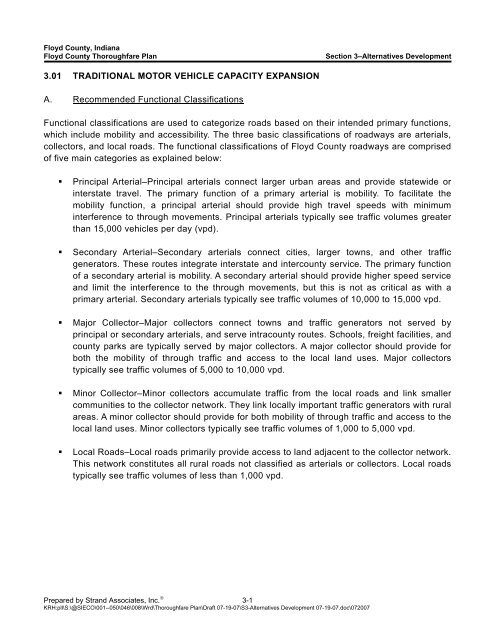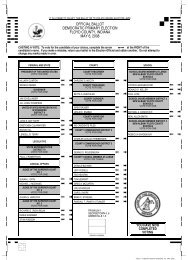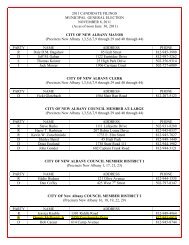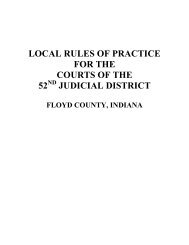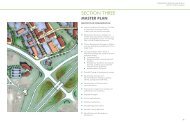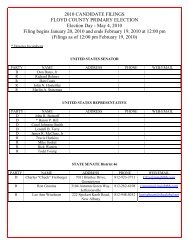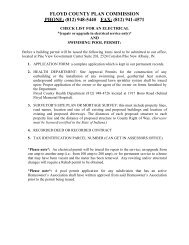Floyd County Thoroughfare Plan - Floyd County Indiana - State of ...
Floyd County Thoroughfare Plan - Floyd County Indiana - State of ...
Floyd County Thoroughfare Plan - Floyd County Indiana - State of ...
Create successful ePaper yourself
Turn your PDF publications into a flip-book with our unique Google optimized e-Paper software.
<strong>Floyd</strong> <strong>County</strong>, <strong>Indiana</strong><strong>Floyd</strong> <strong>County</strong> <strong>Thoroughfare</strong> <strong>Plan</strong>Section 3–Alternatives Development3.01 TRADITIONAL MOTOR VEHICLE CAPACITY EXPANSIONA. Recommended Functional ClassificationsFunctional classifications are used to categorize roads based on their intended primary functions,which include mobility and accessibility. The three basic classifications <strong>of</strong> roadways are arterials,collectors, and local roads. The functional classifications <strong>of</strong> <strong>Floyd</strong> <strong>County</strong> roadways are comprised<strong>of</strong> five main categories as explained below:• Principal Arterial–Principal arterials connect larger urban areas and provide statewide orinterstate travel. The primary function <strong>of</strong> a primary arterial is mobility. To facilitate themobility function, a principal arterial should provide high travel speeds with minimuminterference to through movements. Principal arterials typically see traffic volumes greaterthan 15,000 vehicles per day (vpd).• Secondary Arterial–Secondary arterials connect cities, larger towns, and other trafficgenerators. These routes integrate interstate and intercounty service. The primary function<strong>of</strong> a secondary arterial is mobility. A secondary arterial should provide higher speed serviceand limit the interference to the through movements, but this is not as critical as with aprimary arterial. Secondary arterials typically see traffic volumes <strong>of</strong> 10,000 to 15,000 vpd.• Major Collector–Major collectors connect towns and traffic generators not served byprincipal or secondary arterials, and serve intracounty routes. Schools, freight facilities, andcounty parks are typically served by major collectors. A major collector should provide forboth the mobility <strong>of</strong> through traffic and access to the local land uses. Major collectorstypically see traffic volumes <strong>of</strong> 5,000 to 10,000 vpd.• Minor Collector–Minor collectors accumulate traffic from the local roads and link smallercommunities to the collector network. They link locally important traffic generators with ruralareas. A minor collector should provide for both mobility <strong>of</strong> through traffic and access to thelocal land uses. Minor collectors typically see traffic volumes <strong>of</strong> 1,000 to 5,000 vpd.• Local Roads–Local roads primarily provide access to land adjacent to the collector network.This network constitutes all rural roads not classified as arterials or collectors. Local roadstypically see traffic volumes <strong>of</strong> less than 1,000 vpd.Prepared by Strand Associates, Inc. ® 3-1KRH:pll\S:\@SIECO\001--050\046\008\Wrd\<strong>Thoroughfare</strong> <strong>Plan</strong>\Draft 07-19-07\S3-Alternatives Development 07-19-07.doc\072007


